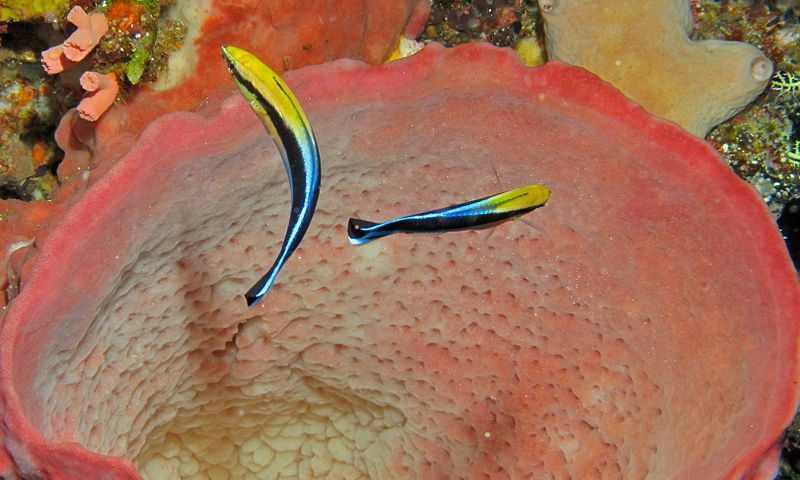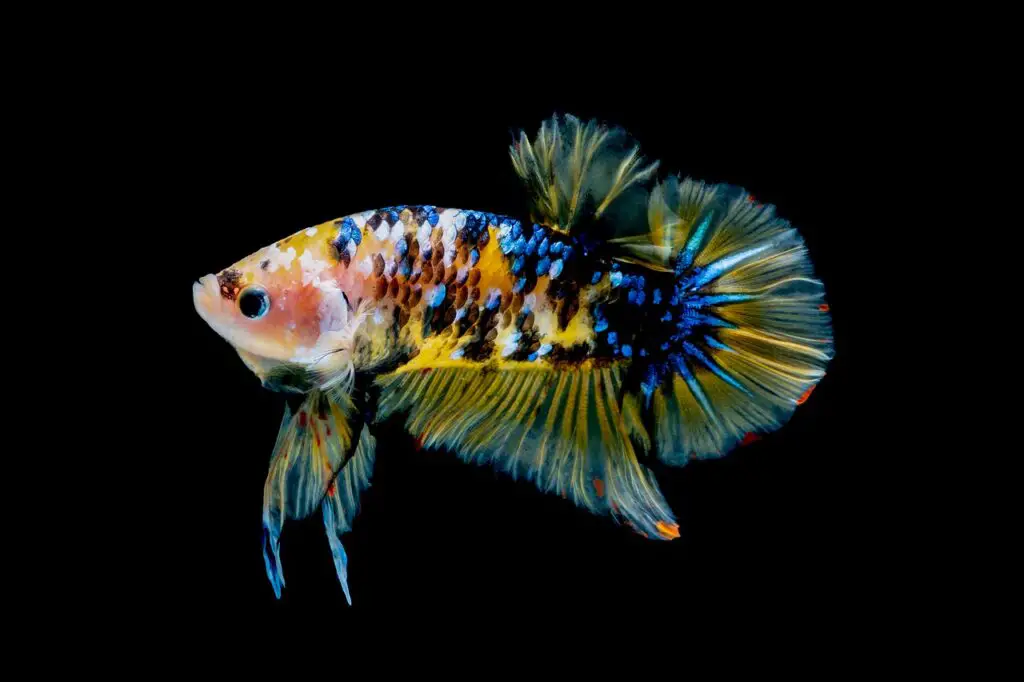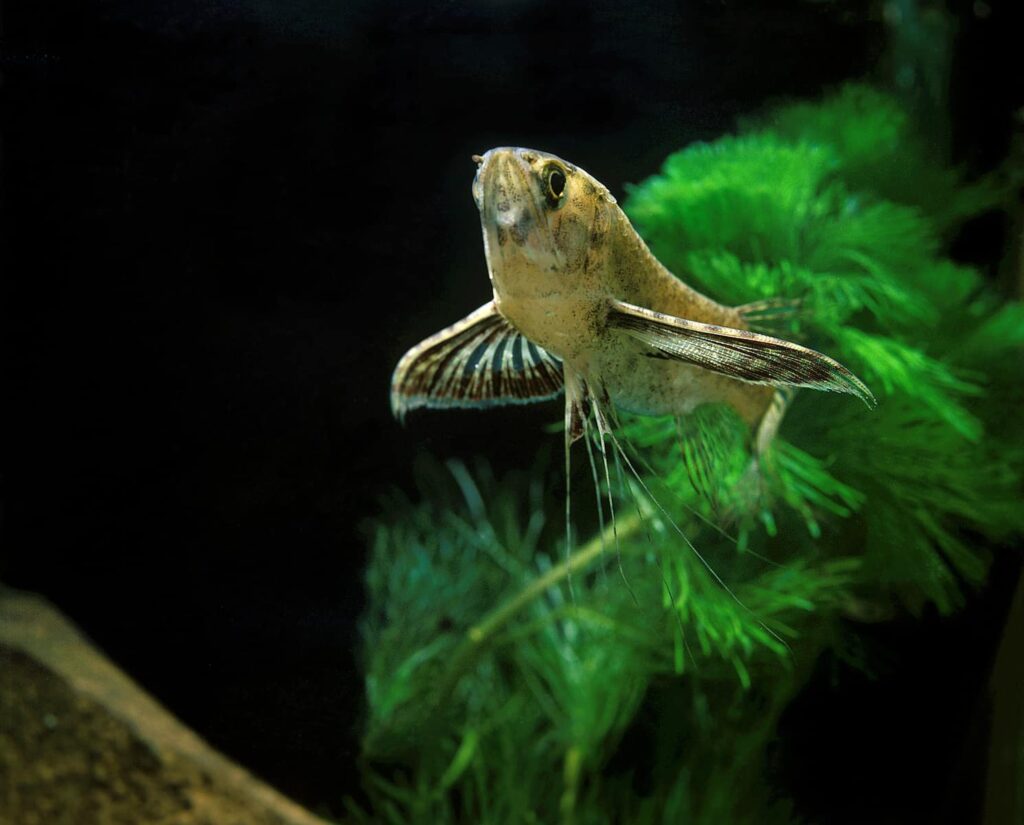Bluestreak cleaner wrasse are tropical fish and are found on coral reefs. They are, as their name suggests, ‘cleaners’ of other fish, eating parasites! They also remove dead and decaying scales from other fish in the aquarium, so they are welcome neighbours in shoals and aquariums where their ‘services’ can be life-saving!
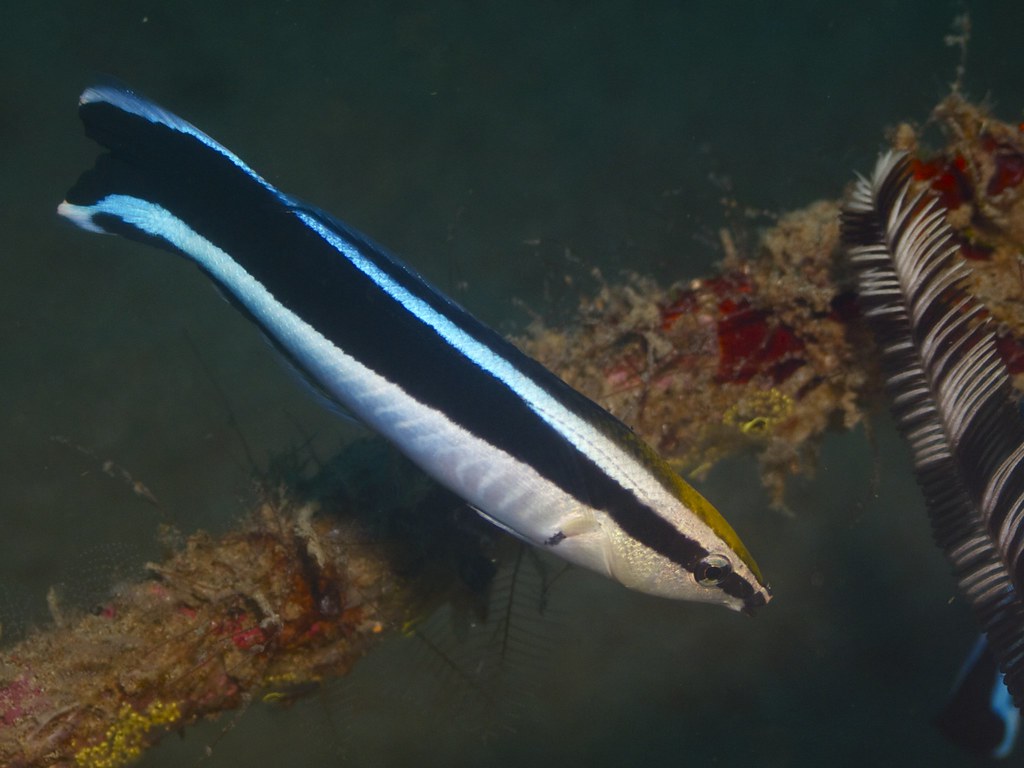
In this guide, we will take a look at everything you need to know about caring for your own bluestreak cleaner wrasse.
- Fish Lifespan: Up to 4 Years Old
- Tank Size: Up to 75 Gallons
- Water Temperature: Between 76F and 82F
- pH: Between 8.1 and 8.4
- Hardness: Between 8 and 12 dKH
- Compatibility: Compatible with Clownfish, Basslets and Damselfish
- Fish Size: Up to 5.5 Inches
How do you take care of Bluestreak Cleaner Wrasses?
If you have a large saltwater aquarium and are looking for an entertaining and pretty active fish, these critters are well worth the investment. Do bear in mind they can grow to an average 5.5 inches.
A friendly little fellow and welcomed by some other fish for its ‘cleaning service’, it is easy for novice owners to think the fish is nutritionally satisfied by nibbling the debris from scales of other fish. This is insufficient to keep the wrasse alive – and accidental starvation often results, unless regular feeding of meaty fish food is offered. Owners need to be very, very careful with their diets!
Though friendly to other types of fish, two male bluestreak cleaning wrasse will fight, sometimes to the death. A male will live happily as the dominant figure in your wrasse family and with two females. For some time, they can successfully cohabitate with a couple of younger wrasse but this may evolve into conflict as a growing male may turn aggressive. Ideally, keep the number of wrasse in your aquarium to a minimum, and allow them plenty of space to get around.
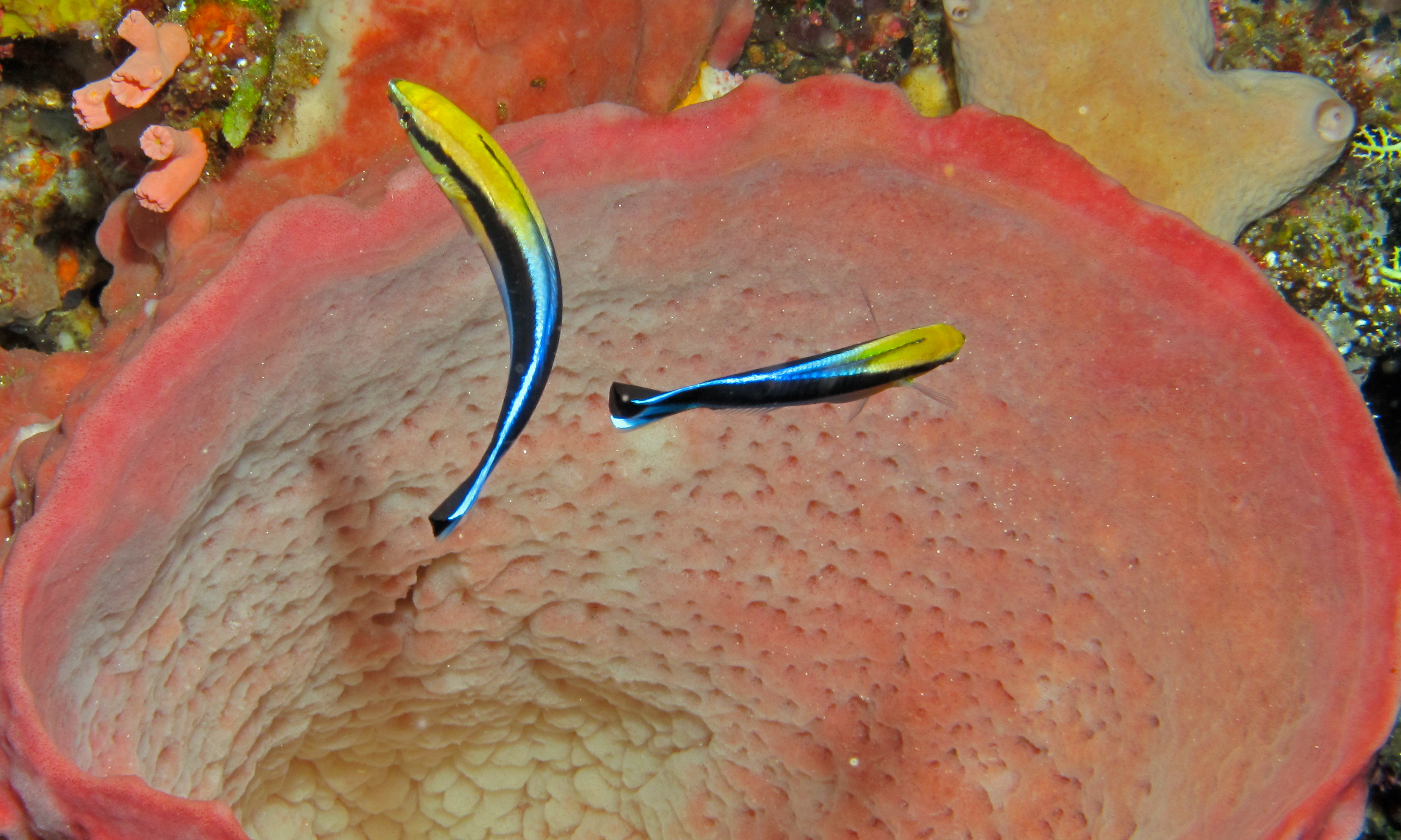
Cleaner wrasse can be bred in captivity. It should be noted that if the sole male in the aquarium dies, a female will replace him as the dominant of the type. Breeding in aquariums relies on the temperature and cleanliness of the water being at optimum levels. Breeding usually takes place in twilight hours in the wild and so in aquariums, that’s likely to be (romantically!) when the light is dimmed!
These cleaner wrasse tend to be very active and dart about extremely quickly. It’s their colourful looks and their active natures which often appeal to fish keepers. However, appearances can sometimes be deceptive, as they can actually be trickier to keep than some of the bigger critters you will see in saltwater aquariums. Tread carefully and only really lean towards these fish if you know what you’re getting into!
What do Bluestreak cleaner wrasse eat?
Cleaner wrasse eat several times per day as they do not have the capacity to eat sufficient healthy amount of food in one go. Kept in an aquarium, intermittent doses of food, including meaty food material, need to be given several times per day for optimum health.
Frozen Mysis Shrimp food is ideal for wrasse in an aquarium. It is vitamin rich and easy to handle, as are fish pellets and flakes. Variety is good to give a balanced range of nutrients and provide more interest, after all, you wouldn’t wish to eat salad for every meal, would you? Besides – these fish are carnivores!
With that in mind, the golden rule is to never host a wrasse in a tank with fish smaller than itself – or, other critters are going to end up as fish food.
Can cleaner wrasse get ich?
Wrasse in aquariums can suffer from ‘Ich’ ( worm infestation ). The material they feed upon, may be subject to the external appearance of Ich but the injected infestation can affect them as it does other fish.
Though treatable, prevention is better than cure and care should be taken to scrutinise your fish before purchase. Any evidence of ‘Ich’, usually noticeable black specks or spots, should be avoided if possible.
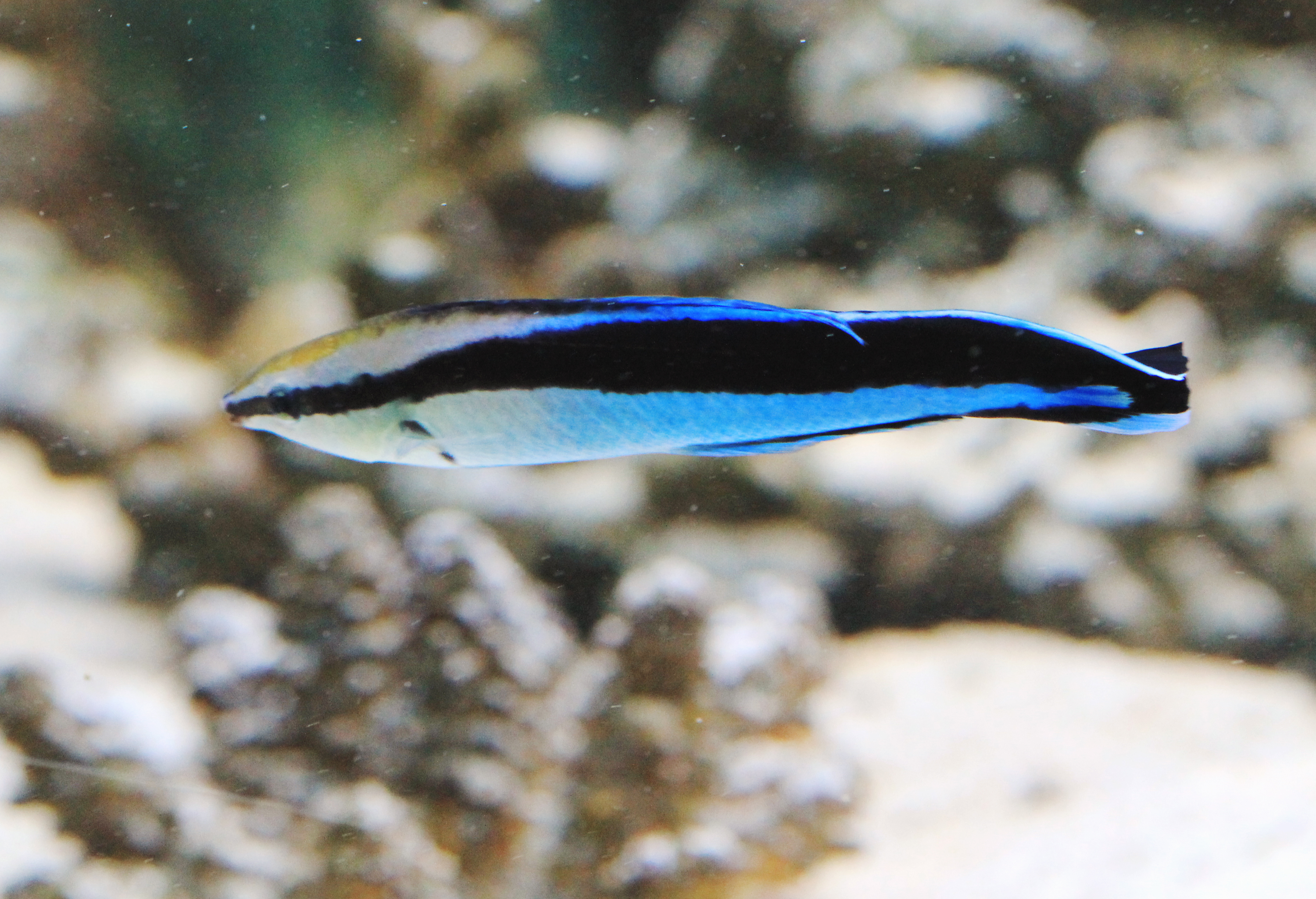
This may not be fatal if contracted in your own aquarium though weakened fish coupled with a reducing food supply, can cause the fish some trauma and ultimately death.
The temperature of the aquarium needs to be between 76 to 82 degrees Fahrenheit and water contaminated with ‘Ich’, as well as plants which can carry this too, will need to be replaced until all signs of it are removed.
What fish do cleaner wrasse clean?
Bluestreak cleaner wrasse will happily clean and help even larger fish, providing they are of reasonable temperament and a different shape! A larger carnivore may not be the best choice of cleaning subject.
Of course, cleaner wrasse get their names from the activity they perform in the wild and captivity. Cleaner wrasse have an interesting symbiotic relationship with visitors to their domain – they provide the cleaning service as visiting fish supply their food!
In the wild, these fish are deliberately sought out by other fish in need of ‘grooming’. Groups of these ‘cleaners’ work in what is known as a ‘station’. A dominant male and usually at least two females and some younger wrasse, welcome visitors by performing a dance-like show, to which visiting fish appear to recognise the symbolism and permit the wrasse to perform their mutually beneficial work.
Are cleaner wrasse hard to keep?
Bluestreak cleaner wrasse are not easy to keep in an aquarium, though it is possible to monitor them with care and attention, in particular to their food supply. Many bought for aquariums sadly starve to death, simply because the source of their food is eaten up and not replenished by other fish in the tank!

Large tanks of least 70 gallons are essential to allow the space for wrasse and their host fish – but even then, the lifespan of wrasse is minimal compared to that which they would enjoy in the wild. Routine observation of the condition of these fish is essential to assist in their quality of life.
How long do cleaner wrasse live?
Bluestreak cleaner wrasse live for approximately four years in captivity if cared for with a good supply of food to eat and adequate space.
However, as explained, it’s not always easy to keep these fish. They are not the hardiest of species and are at risk depending on the quality of their water and their diet. They are probably not the best pick for those who are just getting started with saltwater fishkeeping!
Do cleaner wrasse eat copepods?
Yes – cleaner wrasse can and will eat copepods. Wrasses are saltwater carnivorous fish who thrive on small shrimps as well as other meaty material.
Copepods are small crustaceans found in sand and rocks, so flourish in the natural coral habitat where bluestreak cleaner wrasse live in the wild.
Copepods introduced to the aquarium via live sand or live rock will multiply in that environment – and as they do so, provide a continuous supply of food, provided the atmosphere for them to thrive is maintained. Even so, they alone will be insufficient to sustain the fish, which will most likely require other sources of food.
Should I Adopt a Bluestreak Cleaner Wrasse?
Yes – providing you have a few years of experience in caring for saltwater fish and are willing to put time and effort into making sure they have the best water and food supply available to them.
They are mild mannered gentle fish, compatible with many other fish to live successfully in large aquariums holding at least 70 gallons of water. They measure up to an average 5 inches in length, are a neat, streamlined shape, shaped like a mixture submarine but with a long fin along their back.

They are striped in a pale yellow to electric blue on the uppermost stripe, black in the centre of the three distinct stripes and have a third silvery grey stripe towards their underside. Unusual for this fish are the tweezer like protruding ‘teeth’ they use to carry out their principal activity of munching on the decaying damaged scales and parasites of visiting fish.
They really are interesting additions to the average saltwater tank, but as they rely on so many variables just to stay healthy, some fish keepers may find them a little frustrating to balance, on the whole. Make sure to try other tropical critters such as clownfish, to begin with, and work your way up to these fascinating beasts.
Again, it’s easy to assume that the bluestreak cleaner wrasse can persist only on eating what it cleans off other fish. This is never the case – as they are in fact dependent on a very balanced diet and will need careful nourishment. These are not very hardy fish to say the least – making them delightful if sickly creatures if you’re really not sure about what you’re doing.
Make sure to read up on a few wrasse guides and try working your way up to these wonderful beasts for your saltwater collection.

